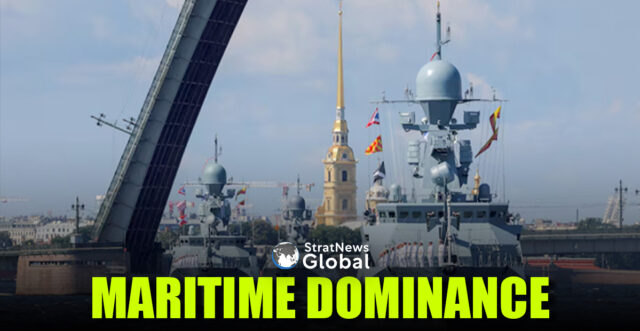Russian President Vladimir Putin has endorsed a new naval strategy designed to fully reestablish Russia’s status as a top global maritime power, Kremlin aide Nikolai Patrushev said in an interview published on Monday.
Russia has the world’s third most powerful navy after China and the United States, according to most public rankings.
With a legacy rooted in Soviet-era maritime strength, the Russian Navy maintains a formidable presence through a mix of nuclear-powered submarines, advanced warships, and strategic missile capabilities.
Its Northern, Pacific, Baltic, and Black Sea Fleets project power across multiple theatres, with increasing focus on the Arctic.
However, the Russian navy has suffered a series of high-profile losses in the Ukraine war.
Maritime Dominance
Recent modernisation efforts, including the deployment of hypersonic weapons and new-class submarines, underscore Moscow’s ambition to remain a dominant maritime force.
Patrushev, a former KGB officer who served with Putin in the northern Russian city of St Petersburg during Soviet times, said the new naval strategy – entitled “The Strategy for the Development of the Russian Navy up to 2050” – had been approved by Putin in late May.
“Russia’s position as one of the world’s greatest maritime powers is gradually recovering,” Patrushev told the Argumenti i Fakti newspaper in an interview.
“It is impossible to carry out such work without a long—term vision of the scenarios for the development of the situation in the oceans, the evolution of challenges and threats, and, of course, without defining the goals and objectives facing the Russian Navy,” Patrushev said.
Patrushev gave no further details about the strategy, though Russia has ramped up spending on defence and security to Cold War levels as a percentage of gross domestic product.
A U.S. Department of Defence report) said in 2021 that China had the largest navy in the world and that Beijing’s overall battle force is expected to grow to 460 ships by 2030.
Open source data suggests Russia has 79 submarines, including 14 nuclear-powered ballistic missile submarines, as well as 222 warships. Its main fleet is the Northern Fleet, headquartered in Severomorsk on the Barents Sea.
(With inputs from Reuters)





